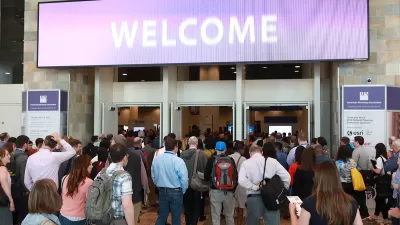How should a statement of purpose for a graduate school application differ from one for an undergrad program? This post outlines the elements of a compelling graduate school statement.

A few years ago I blogged about the statement of purpose in planning. I made five suggestions that are still relevant:
- Provide specific details about your past work, study, and activist experience preferably linking them to your plans for graduate work.
- Assume an intelligent reader.
- Balance experience, opinion, and a desire to learn.
- Show an interest in the program to which you are applying.
- Finally, keep it short. And make the key points stand out.
Over the past few years I’ve noticed statements improving in some ways. However, they also may be suffering from the explosion of advice on the internet, much of it presumably focused on the large group of people trying to enter undergraduate programs. Many schools require two statements of these undergraduate applicants—one about the applicant as a person (perhaps a general topic, maybe focused on a theme such as learning from mistakes) and one about the applicant's interest in a major (often linking it to life experiences and written in a novelistic or journalistic style). Such statements frequently start with anecdotes—even directly quoted conversations. I’ve been a reader of such statements and the format is well honed.
However, the graduate school statement of purpose is different in some fundamental ways:
- In a graduate school statement you should focus on what you want to learn. You are not trying to get a job or show you are smart (read the section in the earlier blog on assuming an “intelligent reader” for more about this). You are, instead, trying to show you want to build on existing knowledge and fill important gaps.
- The statement should read less like a novel or newspaper article and should have a more direct style. After one has read a hundred of them, even the undergraduate statements tend to feel canned and overly coached. When I was doing undergraduate admissions I longed for some directness so I would get a sense of the student rather than the team of adults presumably honing every word in a way that might work for a short story but felt artificial in a statement. In a graduate statement this is even more important. The University of Washington has reproduced advice from the Fulbright program that says something similar: http://depts.washington.edu/engl/advising/gradschool/SoP2.php
- As I outlined in the previous blog: “If you describe personal details make them relevant to your career trajectory. If you grew up in a single-parent family you'd perhaps mention it to demonstrate a motivation for your desire to study rental housing discrimination....” However, take care with such personal details—including where you have lived or traveled for leisure. It is only a very rare statement that uses such details in a compelling way.
After five and a half years of doing monthly blogs, I am now changing to one blog every 2 months.
For earlier advice on Getting into graduate school in planning see: how to decide if planning is for you, whether to get work experience before you go to grad school, find the right program, understand the basic philosophiesunderlying graduate education in planning, evaluate universities, use social media to find out about schools, apply, write a statement of purpose, obtain letters of reference, assess your undergraduate transcripts and your GREs, visit successfully, and decide which offer to take up including how to assess the real costs.

Manufactured Crisis: Losing the Nation’s Largest Source of Unsubsidized Affordable Housing
Manufactured housing communities have long been an affordable housing option for millions of people living in the U.S., but that affordability is disappearing rapidly. How did we get here?

Americans May Be Stuck — But Why?
Americans are moving a lot less than they once did, and that is a problem. While Yoni Applebaum, in his highly-publicized article Stuck, gets the reasons badly wrong, it's still important to ask: why are we moving so much less than before?

Research Shows More Roads = More Driving
A national study shows, once again, that increasing road supply induces additional vehicle travel, particularly over the long run.

Judge Halts Enforcement of Anti-Homeless Laws in Grants Pass
The Oregon city will be barred from enforcing two ordinances that prosecute unhoused residents until it increases capacity and accessibility at designated camping sites.

Advancing Sustainability in Los Angeles County Schools
The Los Angeles County Office of Education’s Green Schools Symposium brings together educators, students, and experts to advance sustainability in schools through innovative design, climate resilience strategies, and collaborative learning.

Using Old Oil and Gas Wells for Green Energy Storage
Penn State researchers have found that repurposing abandoned oil and gas wells for geothermal-assisted compressed-air energy storage can boost efficiency, reduce environmental risks, and support clean energy and job transitions.
Urban Design for Planners 1: Software Tools
This six-course series explores essential urban design concepts using open source software and equips planners with the tools they need to participate fully in the urban design process.
Planning for Universal Design
Learn the tools for implementing Universal Design in planning regulations.
City of Moreno Valley
Institute for Housing and Urban Development Studies (IHS)
City of Grandview
Harvard GSD Executive Education
NYU Wagner Graduate School of Public Service
City of Cambridge, Maryland
Newport County Development Council: Connect Greater Newport






























